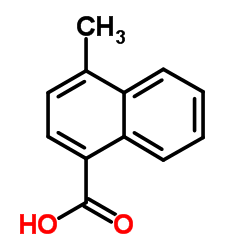| 结构式 | 名称/CAS号 | 全部文献 |
|---|---|---|
 |
4-甲基-1-萘甲酸
CAS:4488-40-8 |
| 结构式 | 名称/CAS号 | 全部文献 |
|---|---|---|
 |
4-甲基-1-萘甲酸
CAS:4488-40-8 |